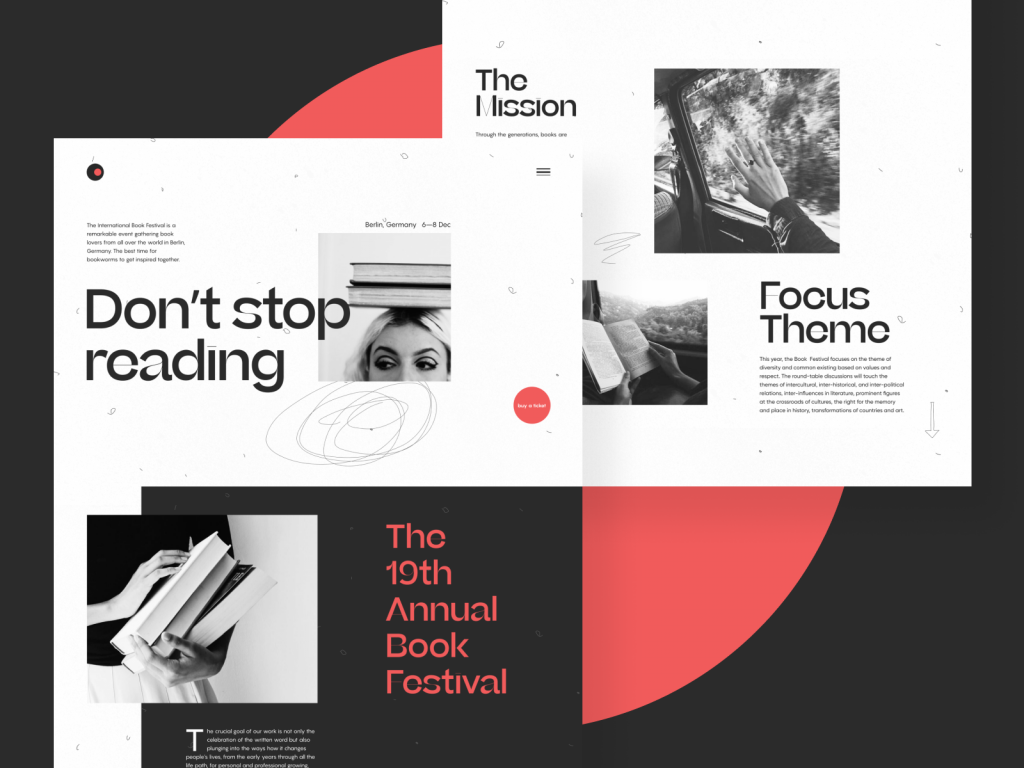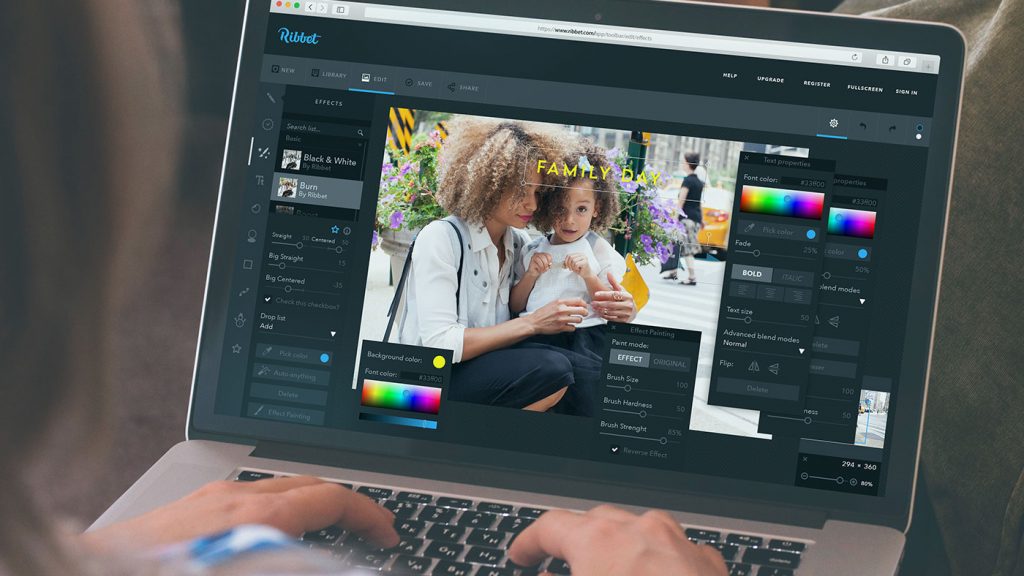In one of our previous posts we have collected the set of 20 inspiring and informative TED talks for designers. Seeing that it got quite popular and gave our readers a dose of inspiration, today we would like to continue this path and feature here a new set of speeches that we found useful and catchy.
This time the main topic of the day is creativity. No doubt that inspiration for designers of all kinds is much larger than the design itself as well as for writers, it’s much broader than books and for the artists it’s far beyond the art. Inspiration is everywhere when we are ready and willing to absorb it. And, no doubt, the great spark of creativity and encouragement is traditionally transferred by avid creators who are keen to share their inspiration, experience and ideas. They say a candle loses nothing burning other candles. And here in the studio, we always take the moments of absorbing wise thoughts and creative ideas from great masters.
So, this collection is concentrated on creativity of all kinds from the experts in different spheres of human activity. We offer you 10 TED talks, all with the descriptions given on the TED website. Most of them are already classic, sometimes even could be called legendary, and that makes them even more precious as they have been successfully checked with time and practice. The others are very fresh and reflect the trends of the moment. Enjoy watching!
Elizabeth Gilbert: Your elusive creative genius
Elizabeth Gilbert muses on the impossible things we expect from artists and geniuses — and shares the radical idea that, instead of the rare person “being” a genius, all of us “have” a genius. It’s a funny, personal and surprisingly moving talk.
Some thoughts to remember:
And what I have to sort of keep telling myself when I get really psyched out about that is don’t be afraid. Don’t be daunted. Just do your job. Continue to show up for your piece of it, whatever that might be. If your job is to dance, do your dance. If the divine, cockeyed genius assigned to your case decides to let some sort of wonderment be glimpsed, for just one moment through your efforts, then “Olé!” And if not, do your dance anyhow. And “Olé!” to you, nonetheless. I believe this and I feel that we must teach it. “Olé!” to you, nonetheless, just for having the sheer human love and stubbornness to keep showing up.
David Kelley: How to build your creative confidence
Is your school or workplace divided into “creatives” versus practical people? Yet surely, David Kelley suggests, creativity is not the domain of only a chosen few. Telling stories from his legendary design career and his own life, he offers ways to build the confidence to create… (From The Design Studio session at TED2012, guest-curated by Chee Pearlman and David Rockwell.)
Some thoughts to remember:
Everybody has a change-the-world thing. If there is one for me, this is it. To help this happen. So I hope you’ll join me on my quest — you as thought leaders. It would be really great if you didn’t let people divide the world into the creatives and the non-creatives, like it’s some God-given thing, and to have people realize that they’re naturally creative. And those natural people should let their ideas fly. That they should achieve what Bandura calls self-efficacy, that you can do what you set out to do, and that you can reach a place of creative confidence and touch the snake.
John Maeda: How art, technology and design inform creative leaders
John Maeda, former President of the Rhode Island School of Design, delivers a funny and charming talk that spans a lifetime of work in art, design and technology, concluding with a picture of creative leadership in the future. Watch for demos of Maeda’s earliest work — and even a computer made of people.
Some thoughts to remember:
… in many senses, a regular leader loves to avoid mistakes. Someone who’s creative actually loves to learn from mistakes. A traditional leader is always wanting to be right, whereas a creative leader hopes to be right. And this frame is important today, in this complex, ambiguous space, and artists and designers have a lot to teach us, I believe.
It’s because leaders, what we do is we connectimprobable connections and hope something will happen, and in that room I found so many connectionsbetween people across all of London, and so leadership, connecting people, is the great question today.Whether you’re in the hierarchy or the heterarchy, it’s a wonderful design challenge.
Tim Harford: How frustration can make us more creative
Challenges and problems can derail your creative process … or they can make you more creative than ever. In the surprising story behind the best-selling solo piano album of all time, Tim Harford may just convince you of the advantages of having to work with a little mess.
Some thoughts to remember:
…yes, we need to run the stupid experiments, we need to deal with the awkward strangers, we need to try to read the ugly fonts. These things help us. They help us solve problems, they help us be more creative.
Julie Burstein: 4 lessons in creativity
Radio host Julie Burstein talks with creative people for a living — and shares four lessons about how to create in the face of challenge, self-doubt and loss. Hear insights from filmmaker Mira Nair, writer Richard Ford, sculptor Richard Serra and photographer Joel Meyerowitz.
Some thoughts to remember:
Artists also speak about how pushing up against the limits of what they can do, sometimes pushing into what they can’t do, helps them focus on finding their own voice.
So experience and challenge and limitations are all things we need to embrace for creativity to flourish.
We all wrestle with experience and challenge, limits and loss. Creativity is essential to all of us, whether we’re scientists or teachers, parents or entrepreneurs.
Sunni Brown: Doodlers, unite!
Studies show that sketching and doodling improve our comprehension — and our creative thinking. So why do we still feel embarrassed when we’re caught doodling in a meeting? Sunni Brown says: Doodlers, unite! She makes the case for unlocking your brain via pad and pen.
Some thoughts to remember:
Under no circumstances should doodling be eradicated from a classroom or a boardroom or even the war room. On the contrary, doodling should be leveraged in precisely those situations where information density is very high and the need for processing that information is very high. And I will go you one further. Because doodling is so universally accessible and it is not intimidating as an art form, it can be leveraged as a portal through which we move people into higher levels of visual literacy.
Stefan Sagmeister: The power of time off
Every seven years, designer Stefan Sagmeister closes his New York studio for a yearlong sabbatical to rejuvenate and refresh their creative outlook. He explains the often overlooked value of time off and shows the innovative projects inspired by his time in Bali.
Some thoughts to remember:
And one of the handy things that came about was that you could take the logo type and create advertising out of it. Like this Donna Toney poster, or Chopin, or Mozart, or La Monte Young. You can take the shape and make typography out of it. You can grow it underneath the skin. You can have a poster for a family event in front of the house, or a rave underneath the house or a weekly program, as well as educational services.
Shonda Rhimes: My year of saying yes to everything
Shonda Rhimes, the titan behind Grey’s Anatomy, Scandal and How to Get Away With Murder, is responsible for some 70 hours of television per season, and she loves to work. “When I am hard at work, when I am deep in it, there is no other feeling,” she says. She has a name for this feeling: The hum. The hum is a drug, the hum is music, the hum is God’s whisper in her ear. But what happens when it stops? Is she anything besides the hum? In this moving talk, join Rhimes on a journey through her “year of yes” and find out how she got her hum back.
Some thoughts to remember:
When I’m hard at work, when I’m deep in it, there is no other feeling. For me, my work is at all times building a nation out of thin air. It is manning the troops. It is painting a canvas. It is hitting every high note. It is running a marathon. It is being Beyoncé. And it is all of those things at the same time. I love working. It is creative and mechanical and exhausting and exhilarating and hilarious and disturbing and clinical and maternal and cruel and judicious, and what makes it all so good is the hum. There is some kind of shift inside me when the work gets good. A hum begins in my brain, and it grows and it grows and that hum sounds like the open road, and I could drive it forever.
Rory Sutherland: Perspective is everything
The circumstances of our lives may matter less than how we see them, says Rory Sutherland. At TEDxAthens, he makes a compelling case for how reframing is the key to happiness.
Some thoughts to remember:
So the power of reframing things cannot be overstated. What we have is exactly the same thing, the same activity, but one of them makes you feel great and the other one, with just a small change of posture, makes you feel terrible. And I think one of the problems with classical economics is it’s absolutely preoccupied with reality. And reality isn’t a particularly good guide to human happiness.
What you also notice is that in any case our perception is leaky. We can’t tell the difference between the quality of the food and the environment in which we consume it. All of you will have seen this phenomenon if you have your car washed or valeted. When you drive away, your car feels as if it drives better. And the reason for this, unless my car valet mysteriously is changing the oil and performing work which I’m not paying him for and I’m unaware of, is because perception is in any case leaky.
Adam Grant:The surprising habits of original thinkers
How do creative people come up with great ideas? Organizational psychologist Adam Grant studies “originals”: thinkers who dream up new ideas and take action to put them into the world. In this talk, learn three unexpected habits of originals — including embracing failure. “The greatest originals are the ones who fail the most, because they’re the ones who try the most,” Grant says. “You need a lot of bad ideas in order to get a few good ones.”
Some thoughts to remember:
Originals are nonconformists, people who not only have new ideas but take action to champion them. They are people who stand out and speak up. Originals drive creativity and change in the world. They’re the people you want to bet on. And they look nothing like I expected.
Procrastinating is a vice when it comes to productivity, but it can be a virtue for creativity. What you see with a lot of great originals is that they are quick to start but they’re slow to finish.
As we can see, the set of talks is diverse and involves thoughts based on different fields of human activities and self-expression. Anyway, they enrich us with ideas which bring us closer to the user, to creating efficient design and taking everything possible from our natural creativity.





